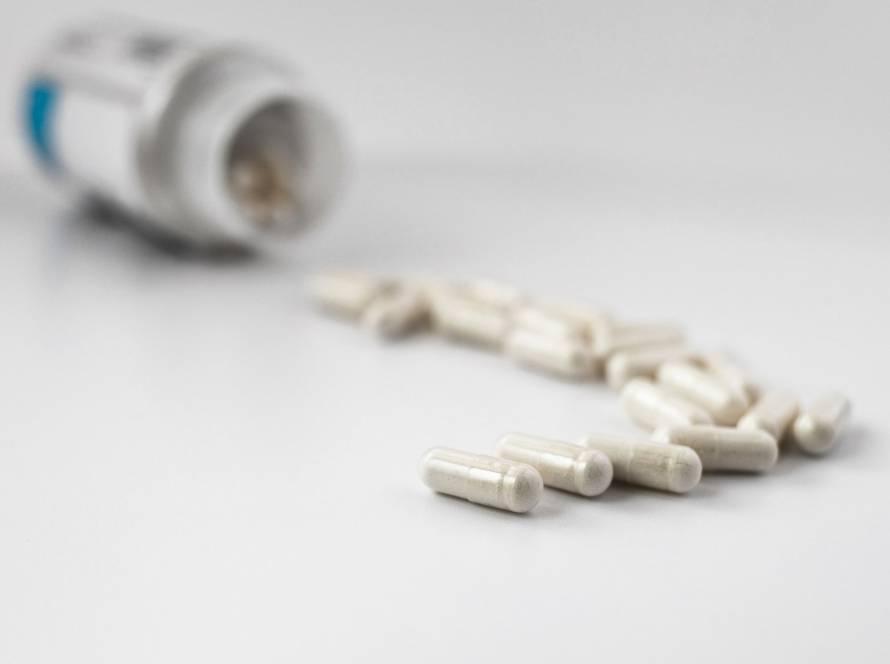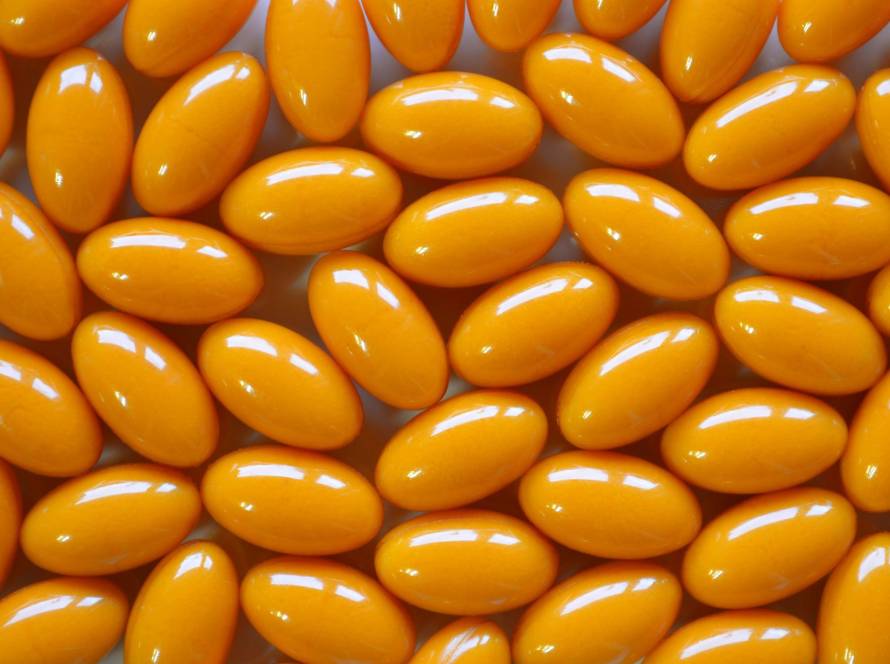Berberine’s ability to lower blood sugar has become a hot topic lately. The numbers tell an important story, global diabetes prevalence among people aged 20-79 hit 10.5% in 2021. Experts predict this number will climb to 12.2% by 2045.
This piece dives deep into the science that answer the question “can berberine lower blood sugar?“. We’ll get into its real-world effectiveness and give a complete picture of this promising natural compound that could help with metabolic health and longevity.
Is berberine effective for blood sugar control?
Research suggests that berberine can help lower blood sugar by improving how our body uses insulin and processes glucose. It activates pathways that support energy use and has shown effects similar to common diabetes medications in some studies. It may be a useful tool for people with high blood sugar, especially when combined with healthy lifestyle habits.
What is berberine and where does it come from?
Berberine, a bright yellow substance with a bitter taste, is a powerful bioactive compound that belongs to the protoberberine group of benzylisoquinoline alkaloids and is classified as a quaternary ammonium salt. Scientists have discovered its remarkable health benefits, particularly in blood sugar control.
Berberine’s botanical sources: barberry, goldenseal and others
Several plant species of different botanical families naturally produce berberine. The main sources include European barberry, goldenseal, Oregon grape, tree turmeric and Chinese goldthread. We can also find berberine in phellodendron, California poppy, yellowroot and other species.
The roots, rhizomes, stems and bark of these plants contain high concentrations of this compound.
Traditional uses in chinese and Ayurvedic medicine
Berberine’s rich history spans thousands of years in many medical traditions. Clay tablets from 650 BC, found in Assyrian emperor Asurbanipal’s library, first documented barberry fruit’s use as a blood purifying agent, according to research.
Chinese medicine has used berberine-containing plants for over 3,000 years. Practitioners prescribed these herbs to treat diarrhea, gastrointestinal infections, respiratory ailments and bacterial infections.
Ayurvedic healers used berberine-rich plants to treat ear, eye and mouth infections. These plants helped cure hemorrhoids, heal wounds and manage digestive, uterine and vaginal conditions. People also used it as an antidote for scorpion stings and snakebites.
Modern interest in metabolic and digestive health
Scientific research has verified many traditional uses of berberine and discovered new applications. Researchers now focus on berberine’s benefits for metabolic health, especially its effects on blood sugar regulation, cholesterol management and weight control.
Studies show that berberine might reduce hyperglycemia and hyperlipidemia while protecting cardiovascular and neurological systems. The compound has shown promising results in reducing non-alcoholic fatty liver disease and related metabolic problems.
Research has revealed berberine’s antimicrobial, anti-inflammatory, antioxidant and atheroprotective properties. These diverse benefits explain why berberine remains a popular natural option to support metabolic and digestive health.
How blood sugar regulation works in the body
The body’s blood sugar regulation system helps us understand how compounds like berberine affect glucose metabolism. Our body maintains stable blood sugar through complex pathways that involve multiple organs working together.
The role of insulin and glucose uptake
The human body keeps blood glucose within a narrow range (4-6 mmol/L or 72-108 mg/dL). Cells use glucose as their main energy source. Our brain needs half of all sugar energy to work properly.
Our pancreatic beta cells produce insulin after meals as blood glucose rises. Insulin binds to receptors on cell surfaces and starts a chain reaction. The insulin receptor’s alpha subunit changes shape and activates tyrosine kinase phosphorylation. This process turns on phosphatidylinositol-3-kinase (PI3K) and moves GLUT4 glucose transporters from inside cells to their surface.
We’ll find GLUT4 transporters only in skeletal muscle, heart muscle and fat tissue. These transporters let glucose enter these cells. Insulin also helps our liver and muscles make glycogen while stopping the liver from producing glucose.
What happens in insulin resistance and type 2 diabetes
Cells don’t respond well to insulin during insulin resistance. The pancreas makes extra insulin at first to keep blood sugar normal. This strategy stops working after a while and blood sugar stays high.
Here’s why insulin resistance happens:
- Too much belly fat;
- Not enough exercise;
- Eating lots of processed, high-carb foods;
- Some medicines and hormone problems.
Type 2 diabetes prevents GLUT4 from moving glucose into cells. Even with high blood sugar, cells can’t use this energy source. Beta cells make less insulin as time goes by.
Why managing blood sugar is critical for long-term health
High and low blood sugar can hurt blood vessels everywhere, including our brain. Long-term high blood sugar creates serious problems in many parts of our body.
Too much blood sugar damages our nerves, eyes and kidneys. It also makes heart disease more likely. Our brain needs steady glucose since it can’t store sugar and must have constant fuel.
Low blood sugar (below 70 mg/dL) causes immediate problems like confusion, sweating and rapid heartbeat. Severe cases might lead to seizures or coma. We need to check our blood sugar often and keep it at the right level to avoid both immediate dangers and future complications.
How does berberine lower blood sugar?
Research shows berberine affects blood glucose levels through multiple mechanisms. This natural compound works through several complementary pathways that together create anti-diabetic effects.
Activation of AMPK and its metabolic effects
AMP-activated protein kinase (AMPK) activation serves as berberine’s main mechanism. Scientists often call AMPK the body’s metabolic master switch. AMPK activation starts within 30 minutes after berberine exposure and stays elevated for more than 16 hours. This long-lasting activation helps improve energy production and reduces energy storage throughout the body. Studies reveal that berberine boosts AMPK phosphorylation better than AICAR, another AMPK activator.
Improving insulin sensitivity and glucose uptake
Berberine boosts insulin sensitivity by increasing insulin receptor expression and helping glucose enter cells. Lab studies show berberine boosted glucose consumption by 72.9-113.7% in adipocytes. It also increased glucose uptake in muscle cells by 170%, performing better than insulin. Berberine helps GLUT4 move to cell membranes more than three times faster, which lets glucose enter cells easily.
Inhibiting mitochondrial respiration and stimulating glycolysis
Berberine blocks mitochondrial respiratory complex I and reduces oxygen consumption up to 45.7% in adipocytes. This blockage raises the AMP/ATP ratio in cells, which then activates AMPK. Cells then move toward glycolysis for energy production. Studies prove berberine raises lactic acid production by 47.4-163.8%.
Effect on gut microbiota and glucose absorption
Berberine changes gut microbiota composition and increases good bacteria that make short-chain fatty acids. It also blocks α-glucosidase in the intestine, which reduces carbohydrate absorption. These gut-related changes help improve GLP-1 secretion and boost insulin release.
Clinical evidence: reductions in FPG, HbA1c and 2hPBG
Clinical studies prove berberine’s effectiveness in reducing blood glucose markers. Meta-analyzes reveal that berberine lowers fasting plasma glucose (FPG) by 0.82 mmol/L, hemoglobin A1c (HbA1c) by 0.63% and 2-hour postprandial blood glucose (2hPBG) by 1.16 mmol/L.
Berberine’s glucose-dependent insulinotropic effect
Berberine stands out from conventional medications because it shows a glucose-dependent effect. It promotes insulin secretion only when blood glucose levels are high. This happens because berberine blocks voltage-gated potassium channels in pancreatic β-cells. Cell membrane depolarization lasts longer only when blood glucose rises. This unique feature reduces hypoglycemia risk, making it valuable for managing metabolic health.
How berberine compares to standard diabetes treatments
Blood sugar control needs both natural compounds and standard medications. Let’s break down how berberine stacks up against common diabetes treatments.
Comparison with metformin in clinical trials
Clinical studies that compare berberine with metformin show they work about the same way. A 3-month trial with 36 newly diagnosed type 2 diabetes patients used berberine (1.5g daily) and showed amazing results. The treatment reduced hemoglobin A1c from 9.5% to 7.5%, fasting blood glucose from 10.6 to 6.9 mmol/L and postprandial blood glucose from 19.8 to 11.1 mmol/L, matching metformin’s results. Berberine worked even better for lipid metabolism and reduced triglycerides and total cholesterol more than the metformin group.
Potential as an add-on therapy to oral hypoglycemics
Berberine works well on its own and as a complementary treatment with standard medications. Studies show combining it with oral hypoglycemic agents (OHAs) didn’t increase adverse events (RR = 0.73) or hypoglycemia risk (RR = 0.48). Scientists have studied berberine as an extra therapy for type 2 diabetes. Patients with hard-to-control diabetes saw better results after adding berberine to their existing treatments. Their fasting glucose, postprandial glucose and insulin resistance index improved after just one month.
Advantages: low cost, low risk of hypoglycemia
Berberine has several advantages over regular treatments. The compound triggers insulin release only when blood sugar is high. This happens because it blocks voltage-gated potassium channels in pancreatic β-cells. This is a big deal as it means that hypoglycemia risk stays low, making it safer than sulfonylureas and other insulin secretagogues. Berberine’s low cost makes it available to diabetes patients in low-income areas.
The current evidence makes a strong case for berberine as a valuable option to regulate blood sugar and metabolic health. This natural compound brings together traditional medicine wisdom and modern scientific proof, showing real potential to support metabolic health and longevity.
Read more:


